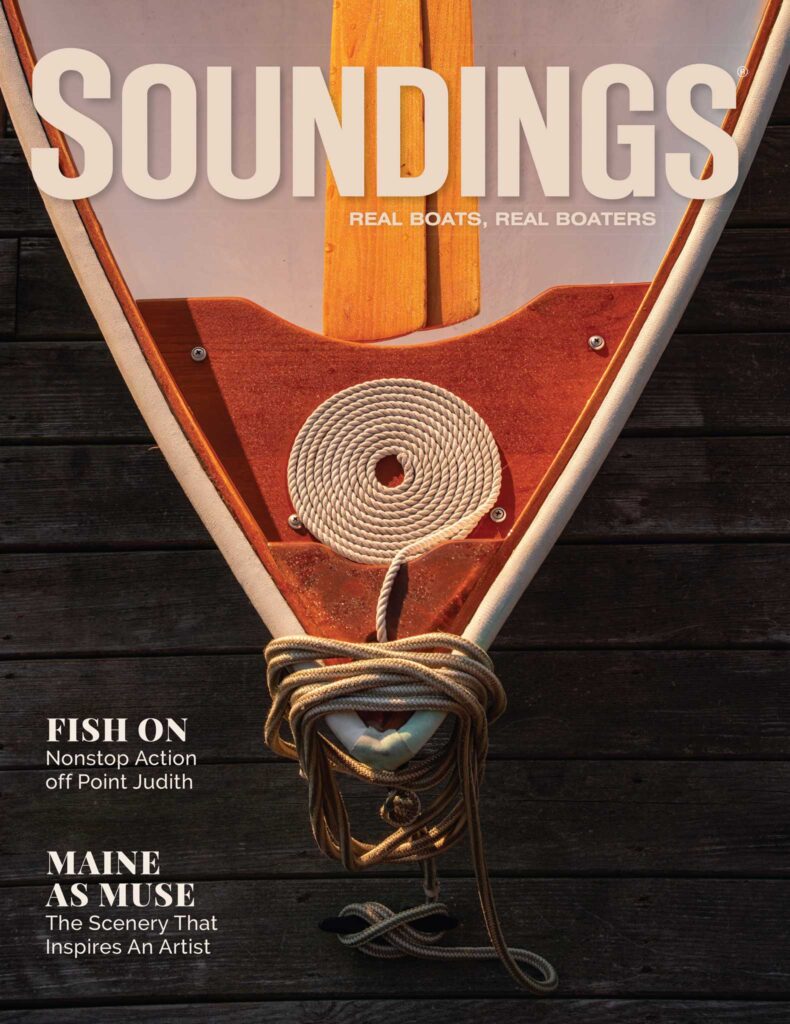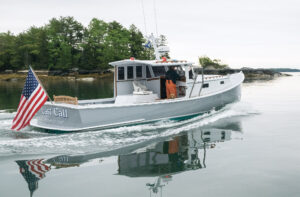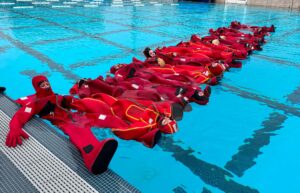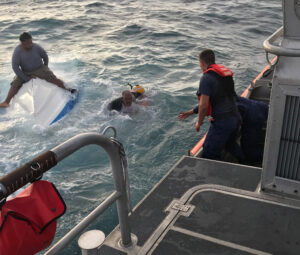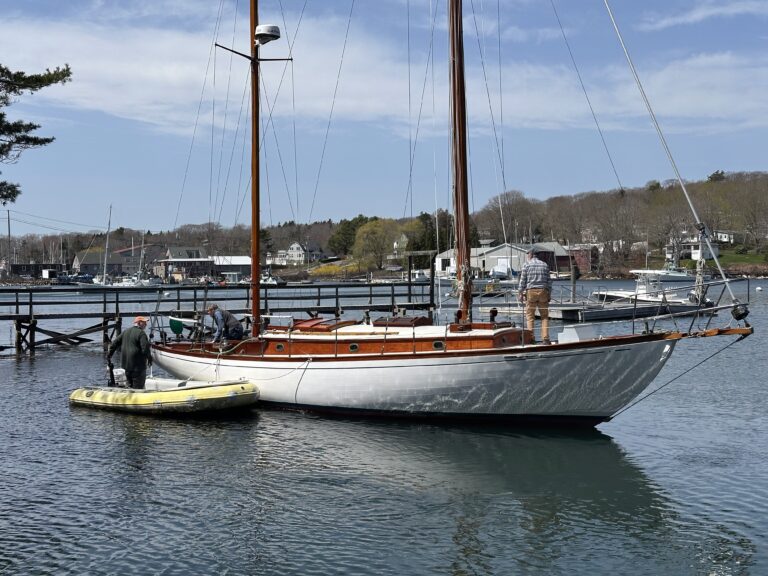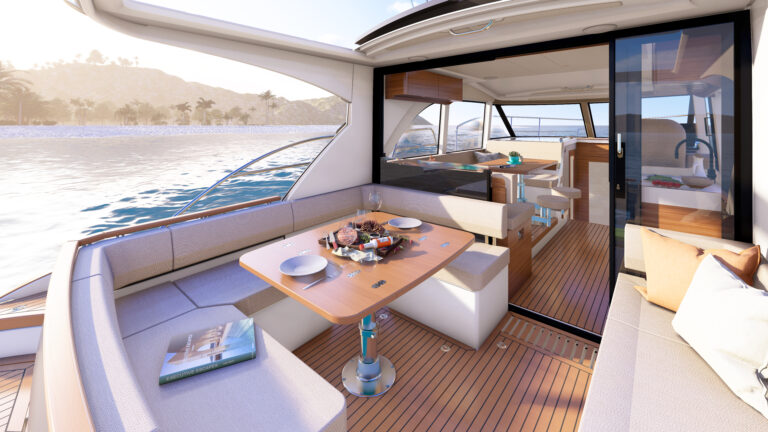It was a glorious evening as we motored into the anchorage. There was a largish motoryacht in the deeper water near the entrance, but there was plenty of room near the head of the anchorage. We circled the cove for a bit, looking for the best place to drop the hook. The holding was good, in soft, glutinous mud that was perfect for our Danforth anchor.

After letting out sufficient scope we sat for a few moments with the engine off until we were confident the anchor was holding. Dinner was soon prepared, and we ate in the cockpit as we watched the amber sun dip below the trees to the west. After washing dishes we were soon in our bunks, drifting to sleep to the call of loons in the distance.
It seemed as though I had hardly shut my eyes when I was awakened by shouting from outside. Coming up on deck, it took a few moments for my eyes to adjust to the moonlight. Alongside Mallard was a decidedly tatty-looking fiberglass sloop of about 30 feet. There was a man in the cockpit who, between shouting obscenities at the woman wrestling with a heavy, muddy anchor chain on the foredeck, was shouting at me in no uncertain terms that I had no idea what I was doing and that I was dragging my anchor.
We were, indeed, moving. I had no idea why, as I had made sure our anchor was holding before I went to bed, but there was no denying that the fancy powerboat was getting closer. It was about this time that the woman on the sloop, spurred on no doubt by the profanities hurled in her direction from the cockpit, gave a mighty heave and hauled aboard not one but two anchors — hers and ours. After untangling our ground tackle from theirs, we reset the hook and went back to bed while the couple on the sloop motored around the anchorage, swearing at each other before finally sailing off into the night, unable to find a suitable place to anchor despite there being plenty of room. Thankfully, I never did come across that boat again, but I have anchored in the anchorage and many like it since, always without incident.
Anchoring has a lot going for it. If you only travel from marina to marina because you are unsure or nervous about anchoring, you’re missing out. Here are some tips to help you have a secure and settled night.
Practice
It’s a good idea to perfect your anchoring technique by practicing. Look on the chart and pick an area that has a suitable bottom — mud is ideal. Try to be well away from other boats so if you mess up you won’t foul someone’s chain or bump into another boat. Practice in daylight — a lunchtime stop is great — when you’ll likely be in the cockpit so you can see if the anchor is not holding.
The right gear

Ground tackle refers to the equipment needed for anchoring. In addition to an anchor, you need chain and/or rope. An all-chain rode is best, as it stows easily in the bow locker and improves the holding power of almost any anchor. The downside is that chain is heavy, so if weight is a concern, shackle 20 feet or so of chain to the anchor and connect rope rode to it. Use nylon — it’s stretchy and absorbs snubbing loads well. Avoid high-tech non-stretch line. I like to let out chain that is at least three times the depth of water at high tide; with rope, use five times the depth. More is generally better.
Weather
Pay attention to the forecast. If the wind shifts and blows hard into an anchorage it may become uncomfortable at best and in really poor conditions could prove to be a trap from which there is no escape.
Which anchor?
Entire books and countless magazine articles have been written about which anchor is the best, but your choice will come down to the type of boat you have, the area where you cruise and your personal preference. On my 32-foot Grand Banks, I have two anchors, a 35-pound CQR and a lighter Fortress. I’ve used these extensively. They work well for us, hold in most conditions, and I see no reason to change. On rocky bottoms the traditional fisherman’s anchor is a good choice.
Scope things out
Think of others. If you come into an anchorage where other boats are anchored, consider how your boat will move when wind or tide changes. Think before you drop the hook, and don’t anchor over the top of someone else’s ground tackle as the couple did to me. If there’s no room, go elsewhere. Set an anchor alarm, even if you feel secure — you’ll sleep better.
This article originally appeared in the December 2015 issue.

